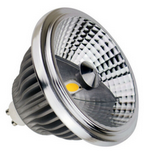Conductive polymers
Thermoplastics > Superpolymers
| Thermal conductivity of polymers | |
The growth in vehicle electronics creates opportunities for suppliers with materials that address thermal conductivity and electromagnetic shielding. The value of the thermal conductivity of plastics is small. The thermal conductivity of an amorphous polymer (ABS, PC, PMMA, SAN, etc.) and crystalline polymer is generally quite low, 0. 1 to 0.25 W / mK. Metals, for example, have thermal conductivities 2000 times greater than plastics, this is due to the absence of free electrons in the plastic material, while the polymers heat transfer is made thanks to the vibration of the crystal lattice. Therefore, only high crystallinity polymers can transmit heat. Also the semi-crystalline ones (PA, PBT, PP, etc.) are not very efficient thermal conductors, because the presence of an amorphous phase inside them reduces the transmission of heat. The thermally conductive polymer products are characterized by a high efficiency in heat transfer in fact they have thermal conductivities 200 times higher than ordinary technical thermoplastics. The use of these products allows the elimination of the heat produced for example from electronic and electrical devices, favoring the transport of heat by conduction as well as by natural convection and are available in both electrically insulating and conductive versions. The combination of different materials of load and resins, allows the realization of a wide range of products, thermally conductive, that thanks to the use of materials of load, provide values of thermal conductivity included between 1 and 40 W / mK. |  |
| Products Range | |
The grades offered by Mexpolimeros, both standard and custom, are formulated to meet a variety of electrical requirements without affecting polymer properties, molding and extrusion efficiencies, design flexibility, our composite compounds are made with PBT, PC, ABS resins , PC / ABS, PA66, PP and many more with nickel-plated carbon fiber or stainless steel fiber, ceramics and other cargo. We also have TPE compound. |  |
| Adhesive interface | |
It is possible to use adhesive interface for connecting molded parts to the surface to increase the cooling heat exchange. They are available in the market, stickers with 50 ÷ 280 microns thick and adhesives based on acrylic or epoxy. There are sheets, more or less thick, soft and elastic, to ensure thermal conductivity between 2.5 and 10 W / mK and that, compared with traditional solutions, are not fragile (such as ceramic) and does not degrade over time ( as fat). Both types provide thermal conductivity and electrical insulation. |  |
| Applications | |
They are mainly used in electronics, microelectronics, where the miniaturization of geometries requires more heat exchange capacity, in the telecommunications sector, household appliances, audio and video components and electrical converters, cooling fins in LED systems, including lights in front of the car. |  |
| Benefits | |
The weight is relatively low compared to metals (50-70% less) the reduced cost, while the chemical inertia and linear thermal expansion values are comparable to those of metals, the flexibility in the forms during the design, thanks to the versatility of the injection and over-molding process, the cheapest production processes, even from the point of view of energy, flexibility and adaptability of the various solutions (type changing polymer and type and load amount), the use of traditional plastic molding machines, absence of corrosion phenomena, in the mass coloring capacity (although limited), complete the picture of the simplicity of molding and recyclability. |  |
| Thermosetting polymers | |
They hardly admit plastic deformation, n the manufacture there is a heating operation where great reticulation takes place. When heated, they do not break or plasticize, but burn (pyrolysis) |  |
| The thermal conductivity | |
As the temperature increases, the thermal conductivity decreases to stabilize near the melting point. The thermal conductivity of the melt, on the other hand, is practically independent of temperature. | |
| Processability | |
Currently, ICP thermoplastic systems can be processed by extrusion and injection molding, as well as can be used to make blow molded parts or blown films. Through the process of injection molding, dividers, rails, shelves, containers, etc can be manufactured; while by extrusion sheets for thermoforming, filaments, profiles and coatings for cables can be obtained. |  |
| Definición de conductividad térmica [Definición tomada de Wikipedia] | |
The conductivity or thermal conductivity (indicated by λ ok) (unit: W / (m • K)) is the relation, in stationary conditions, between the heat flow and the temperature gradient that causes the passage of heat. In other words, thermal conductivity is a measure of a substance's ability to transmit heat and only depends on the nature of the material, not on its shape. Thermal conductivity should not be confused with thermal diffusivity (or "thermometric conductivity"), which is the relationship between thermal conductivity and the product of the specific density and heat of the given substance (expressed in the International System in m2 / s , similar to all "diffusivity") and measures the ability of a substance to transmit, not heat, but rather a change in temperature. Thermal conductivity is defined as the constant of proportionality between the observed heat flux and the temperature gradient that causes: thermal conductivity = heat of flow / (temperature gradient). |  |
